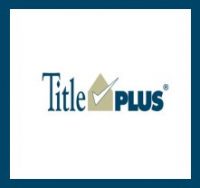« Return to 2014 June - Year in Review 2013 Issue Index
TitlePLUS® program update

The mission continues
The TitlePLUS initiative started in 1997 after consultations with the real estate bar. There was more than title insurance on the agenda. The mission was to combine the best of title insurance with the skills and knowledge of the real estate bar. The goal: maintain the important role of the real estate lawyer as the client’s key independent advisor in a transaction. This is an integral part of what keeps the program’s heart beating today. In 2013 the TitlePLUS program’s subscriber base increased to 4,900 lawyers and Quebec notaries.
The TitlePLUS program’s commitment to the real estate bar is demonstrated in many ways, one being the annual public awareness campaign that started eight years ago. The goal of the campaign is to educate the public on the valuable role of lawyers and to create awareness that consumer interests are best protected through independent legal advice. In 2013, this public awareness campaign resulted in 110 articles appearing in 91 publications across Canada. This exposure generated over 10.7 million impressions.
The TitlePLUS program also maintained an active presence on Twitter (@TitlePLUSCanada) and Facebook (TitlePLUS HomeBuying Guide – Canada).
To support and encourage the real estate bar, the TitlePLUS programcontinued to participate in legal education by sponsoring and/or exhibiting at 59 conferences and trade shows across the country last year. Speakers from LAWPRO and the TitlePLUS program regularly addressed real estate and risk management topics.
The changing landscape of real estate practice
By keeping a close eye on the market and the evolving nature of real estate practice, the TitlePLUS program remains competitive without compromising the goal of supporting the real estate bar and providing title insurance with Legal Service Coverage.
In 2013, reduced premiums and streamlined underwriting processes enabled lawyers to be more cost effective in their practices while providing cost savings to clients.
In December 2013 we announced a 25 per cent decrease in base premiums for purchases of residential resale properties in most provinces and territories. An extensive market analysis also led to a number of premium reductions for the purchases of new homes from builders under the “New Home Direct” and “Ontario New Home Program” categories.
The limit for automated underwriting for residential properties in Ontario was increased to $2 million for condominiums, new homes and vacant land intended for residential purposes, and to $1.5 million for resale homes on municipal services. Applications for properties at these values no longer require manual review (if no other factors for manual review are present).
Underwriting requirements for realty taxes and utilities on Ontario residential resale homes were changed to accept vendor’s undertakings.
Claims update
Over the last number of years, the rate of claims for the program has remained relatively stable. The average indemnity payment on a TitlePLUS claim (based on claims closed as of December 31, 2013) was approximately $5,000, and 90 per cent of claims were resolved for less than $10,000.
In 2013, building compliance, survey-related, and legal service claims continued to generate the highest claims costs. The number of building compliance claims remained steady at 25 per cent of the total claims count, but costs for those claims decreased to 24 per cent from 49 per cent. This benefit was as a direct result of significant underwriting changes implemented in 2011.
The most common survey-related claims were encroachments by or onto the insured property and easements. Other claims areas of significance include utility and realty tax arrears (by far, the most frequent type of claim), legal description problems and adverse registrations on title.
Last year, we saw a significant increase in the cost of legal service claims resulting from lawyers failing to disclose information material to the lender’s decision to advance funds under the mortgage.
Screening of applications saves money
The TitlePLUS department continues to screen each application for suspicious circumstances and fraud. In 2013, screening of applications based on potential fraud saved the program approximately $1.5 million. Screening applications based on properties identified as possible former marijuana grow operations, and either declining coverage or attaching the appropriate exception to coverage, saved the program approximately $1.2 million.
